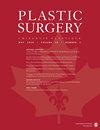Revisiting Gavello's procedure for single-stage reconstruction of the earlobe: The vascular basis, technique and clinical uses
IF 0.6
4区 医学
Q Medicine
引用次数: 0
Abstract
Background Deformities or loss of the earlobe may be congenital, or acquired due to trauma, bites, burns or tumour excision. A variety of single-stage and two-stage procedures have been described for earlobe reconstruction, of which Gavello's procedure was one of the earliest. Objective To revisit Gavello's procedure with reference to the vascular supply of the flap, and discuss the relevance of the technique in current practice. Methods The authors discuss the vascular basis of Gavello's flap, and describe the clinical application of the single-stage Gavello's procedure in diverse clinical situations, including congenital absence of earlobe, post-burn earlobe deformity and traumatic amputation of the earlobe. Results Excellent cosmetic results have been achieved in all different clinical situations in the authors' experience, with preservation of earlobe shape and volume, good colour match and a well-concealed scar in the donor area. Discussion Gavello's procedure is a simple, one-stage procedure that relies entirely on local tissue for earlobe reconstruction; the flap has a predictable vascular supply, skin grafting is not required and the procedure can be used for large defects. An intact donor area over the postauricular mastoid region is a prerequisite. Conclusion The simple, century-old Gavello's procedure is still of great value for reconstruction of earlobe defects of diverse etiology.重述Gavello的单期耳垂重建手术:血管基础、技术和临床应用
耳垂畸形或缺失可能是先天性的,也可能是由于外伤、咬伤、烧伤或肿瘤切除而获得的。各种单阶段和两阶段的耳垂重建程序已被描述,其中加韦洛的程序是最早的一个。目的结合皮瓣的血管供应情况,回顾Gavello手术,探讨该技术在临床中的应用价值。方法讨论了Gavello皮瓣的血管基础,并介绍了单期Gavello手术在先天性耳垂缺失、烧伤后耳垂畸形和外伤性耳垂截肢等不同临床情况下的临床应用。结果根据作者的经验,在所有不同的临床情况下都取得了良好的美容效果,保留了耳垂的形状和体积,颜色匹配良好,供体区瘢痕隐藏良好。Gavello的手术是一种简单的单阶段手术,完全依靠局部组织进行耳垂重建;皮瓣有可预测的血管供应,不需要皮肤移植,该程序可用于较大的缺陷。耳后乳突区域上方完整的供体区域是先决条件。结论简单易行、已有百年历史的Gavello手术对多种病因耳垂缺损的修复仍有重要价值。
本文章由计算机程序翻译,如有差异,请以英文原文为准。
求助全文
约1分钟内获得全文
求助全文
来源期刊

Plastic Surgery
SURGERY-
CiteScore
0.67
自引率
0.00%
发文量
0
审稿时长
6-12 weeks
期刊介绍:
Plastic Surgery (Chirurgie Plastique) is the official journal of the Canadian Society of Plastic Surgeons, the Canadian Society for Aesthetic Plastic Surgery, Group for the Advancement of Microsurgery, and the Canadian Society for Surgery of the Hand. It serves as a major venue for Canadian research, society guidelines, and continuing medical education.
 求助内容:
求助内容: 应助结果提醒方式:
应助结果提醒方式:


